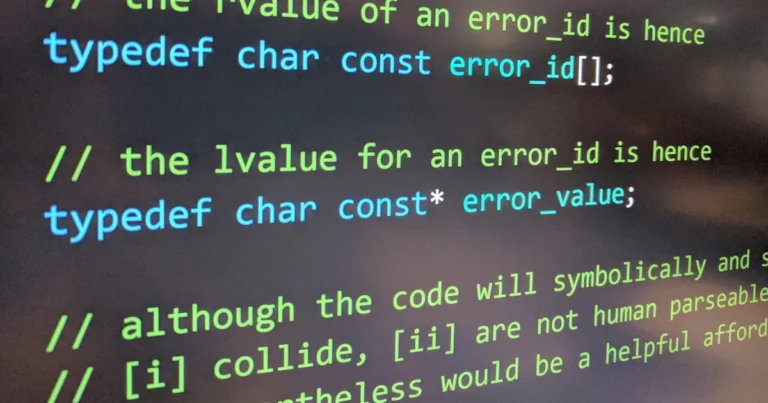Support our educational content for free when you purchase through links on our site. Learn more
How do you implement stack code? [2024]

Have you ever wondered how to implement stack code? Well, you’re in luck! In this comprehensive guide, we will walk you through everything you need to know about implementing stack code. From the basics of stack data structure to different implementations in various programming languages, we’ve got you covered. So, let’s dive in and unravel the mysteries of stack code implementation!
Table of Contents
- Quick Answer
- Quick Tips and Facts
- Background: Understanding Stack Data Structure
- What is Stack?
- Basic Operations on Stack
- Complexity Analysis
- Types of Stacks
- Applications of the Stack
- Implementation of Stack
- What kind of Experience do you want to share?
- Conclusion
- Recommended Links
- Reference Links
Quick Answer
To implement stack code, you need to understand the basics of stack data structure and its operations. You can implement stack code using arrays or linked lists in various programming languages like C++, C, Java, Python, C#, and Javascript. Each implementation has its own advantages and disadvantages. It’s important to choose the right implementation based on your specific requirements. Now, let’s explore stack code implementation in detail!
Quick Tips and Facts
- Stack is a linear data structure that follows the LIFO (Last In First Out) principle.
- Basic operations on stack include push, pop, top, and isEmpty.
- Stack can be implemented using arrays or linked lists.
- Arrays provide a fixed-size stack, while linked lists offer a dynamic-size stack.
- Stack has various applications in areas like infix to postfix conversion, redo-undo features, web browsers, algorithms, memory management, and more.
Background: Understanding Stack Data Structure

Before we dive into the implementation details, let’s take a moment to understand the stack data structure. A stack is a linear data structure where elements are inserted and removed from the same end, known as the top of the stack. It follows the Last In First Out (LIFO) principle, which means the last element inserted is the first one to be removed.
Stacks are widely used in computer science and programming due to their simplicity and efficiency. They are an essential part of many algorithms and have numerous applications in various domains.
What is Stack?
A stack is a collection of elements that supports two main operations: push and pop. The push operation adds an element to the top of the stack, while the pop operation removes the topmost element from the stack. Additionally, a stack also provides other operations like top (returns the top element), and isEmpty (checks if the stack is empty).
Basic Operations on Stack
Let’s take a closer look at the basic operations on a stack:
- Push: The push operation adds an element to the top of the stack. It takes the element as a parameter and inserts it at the top.
- Pop: The pop operation removes the topmost element from the stack. It returns the removed element.
- Top: The top operation returns the top element of the stack without removing it.
- isEmpty: The isEmpty operation checks if the stack is empty. It returns true if the stack is empty, and false otherwise.
Complexity Analysis
The complexity analysis of stack operations is crucial to understand their efficiency:
- Time Complexity:
- Push: O(1)
- Pop: O(1)
- Top: O(1)
- isEmpty: O(1)
The time complexity of stack operations is constant, regardless of the number of elements in the stack. This makes stack operations highly efficient.
Types of Stacks
There are different types of stacks based on their characteristics and usage. Let’s explore a few common types:
- Fixed Size Stack: A fixed size stack has a predetermined size and cannot dynamically grow or shrink. It is implemented using arrays and is suitable when the maximum number of elements is known in advance.
- Dynamic Size Stack: A dynamic size stack can grow or shrink dynamically based on the number of elements. It is often implemented using linked lists, allowing flexibility in adding or removing elements.
Applications of the Stack
Stacks have a wide range of applications in various domains. Some common applications include:
- Infix to Postfix/Prefix Conversion: Stacks are used to convert infix expressions to postfix or prefix notation, which simplifies expression evaluation.
- Redo-Undo Features: Stacks are used to implement redo and undo features in applications, allowing users to revert or redo their actions.
- Web Browsers: Stacks are used to implement the back and forward navigation feature in web browsers.
- Algorithms: Stacks are used in various algorithms like Tower of Hanoi, depth-first search, backtracking, and more.
- Memory Management: Stacks are used in memory management systems to allocate and deallocate memory efficiently.
- String Reversal: Stacks can be used to reverse a string by pushing its characters onto the stack and then popping them in reverse order.
- Function Call Implementation: Stacks are used to implement function calls and manage the call stack during program execution.
Implementation of Stack
Now, let’s explore how to implement stack code using arrays and linked lists in different programming languages.
Implementing Stack using Arrays
Arrays provide a simple and efficient way to implement a stack. Here’s how you can implement a stack using arrays in various programming languages:
C++
// Code snippet for stack implementation using arrays in C++
# include <iostream>
using namespace std;
# define MAX_SIZE 100
class Stack {
int top;
int arr[MAX_SIZE];
public:
Stack() { top = -1; }
bool push(int x) {
if (top >= MAX_SIZE - 1) {
cout << "Stack Overflow!";
return false;
}
arr[++top] = x;
return true;
}
int pop() {
if (top < 0) {
cout << "Stack Underflow!";
return -1;
}
return arr[top--];
}
int peek() {
if (top < 0) {
cout << "Stack is Empty!";
return -1;
}
return arr[top];
}
bool isEmpty() { return top < 0; }
};
C
// Code snippet for stack implementation using arrays in C
# include <stdio.h>
# define MAX_SIZE 100
struct Stack {
int top;
int arr[MAX_SIZE];
};
void init(struct Stack* stack) { stack->top = -1; }
int push(struct Stack* stack, int x) {
if (stack->top >= MAX_SIZE - 1) {
printf("Stack Overflow!");
return 0;
}
stack->arr[++stack->top] = x;
return 1;
}
int pop(struct Stack* stack) {
if (stack->top < 0) {
printf("Stack Underflow!");
return -1;
}
return stack->arr[stack->top--];
}
int peek(struct Stack* stack) {
if (stack->top < 0) {
printf("Stack is Empty!");
return -1;
}
return stack->arr[stack->top];
}
int isEmpty(struct Stack* stack) { return stack->top < 0; }
Java
// Code snippet for stack implementation using arrays in Java
class Stack {
private int top;
private int[] arr;
private int MAX_SIZE = 100;
public Stack() {
top = -1;
arr = new int[MAX_SIZE];
}
public boolean push(int x) {
if (top >= MAX_SIZE - 1) {
System.out.println("Stack Overflow!");
return false;
}
arr[++top] = x;
return true;
}
public int pop() {
if (top < 0) {
System.out.println("Stack Underflow!");
return -1;
}
return arr[top--];
}
public int peek() {
if (top < 0) {
System.out.println("Stack is Empty!");
return -1;
}
return arr[top];
}
public boolean isEmpty() {
return top < 0;
}
}
Python3
# Code snippet for stack implementation using arrays in Python3
class Stack:
def __init__(self):
self.arr = []
def push(self, x):
self.arr.append(x)
def pop(self):
if self.isEmpty():
print("Stack Underflow!")
return -1
return self.arr.pop()
def peek(self):
if self.isEmpty():
print("Stack is Empty!")
return -1
return self.arr[-1]
def isEmpty(self):
return len(self.arr) == 0
C#
// Code snippet for stack implementation using arrays in C#
using System;
class Stack {
private int top;
private int[] arr;
private int MAX_SIZE = 100;
public Stack() {
top = -1;
arr = new int[MAX_SIZE];
}
public bool Push(int x) {
if (top >= MAX_SIZE - 1) {
Console.WriteLine("Stack Overflow!");
return false;
}
arr[++top] = x;
return true;
}
public int Pop() {
if (top < 0) {
Console.WriteLine("Stack Underflow!");
return -1;
}
return arr[top--];
}
public int Peek() {
if (top < 0) {
Console.WriteLine("Stack is Empty!");
return -1;
}
return arr[top];
}
public bool IsEmpty() {
return top < 0;
}
}
Javascript
// Code snippet for stack implementation using arrays in Javascript
class Stack {
constructor() {
this.arr = [];
}
push(x) {
this.arr.push(x);
}
pop() {
if (this.isEmpty()) {
console.log("Stack Underflow!");
return -1;
}
return this.arr.pop();
}
peek() {
if (this.isEmpty()) {
console.log("Stack is Empty!");
return -1;
}
return this.arr[this.arr.length - 1];
}
isEmpty() {
return this.arr.length === 0;
}
}
Implementing Stack using Linked List
Linked lists provide a dynamic way to implement a stack. Here’s how you can implement a stack using linked lists in various programming languages:
C++
// Code snippet for stack implementation using linked list in C++
# include <iostream>
using namespace std;
class Node {
public:
int data;
Node* next;
};
class Stack {
Node* top;
public:
Stack() { top = nullptr; }
bool push(int x) {
Node* newNode = new Node();
newNode->data = x;
newNode->next = top;
top = newNode;
return true;
}
int pop() {
if (isEmpty()) {
cout << "Stack Underflow!";
return -1;
}
Node* temp = top;
int poppedValue = temp->data;
top = top->next;
delete temp;
return poppedValue;
}
int peek() {
if (isEmpty()) {
cout << "Stack is Empty!";
return -1;
}
return top->data;
}
bool isEmpty() { return top == nullptr; }
};
C
// Code snippet for stack implementation using linked list in C
# include <stdio.h>
# include <stdlib.h>
struct Node {
int data;
struct Node* next;
};
struct Stack {
struct Node* top;
};
void init(struct Stack* stack) { stack->top = NULL; }
int push(struct Stack* stack, int x) {
struct Node* newNode = (struct Node*)malloc(sizeof(struct Node));
if (newNode == NULL) {
printf("Memory allocation failed!");
return 0;
}
newNode->data = x;
newNode->next = stack->top;
stack->top = newNode;
return 1;
}
int pop(struct Stack* stack) {
if (stack->top == NULL) {
printf("Stack Underflow!");
return -1;
}
struct Node* temp = stack->top;
int poppedValue = temp->data;
stack->top = stack->top->next;
free(temp);
return poppedValue;
}
int peek(struct Stack* stack) {
if (stack->top == NULL) {
printf("Stack is Empty!");
return -1;
}
return stack->top->data;
}
int isEmpty(struct Stack* stack) { return stack->top == NULL; }
Java
// Code snippet for stack implementation using linked list in Java
class Node {
int data;
Node next;
}
class Stack {
Node top;
public Stack() {
top = null;
}
public boolean push(int x) {
Node newNode = new Node();
newNode.data = x;
newNode.next = top;
top = newNode;
return true;
}
public int pop() {
if (isEmpty()) {
System.out.println("Stack Underflow!");
return -1;
}
int poppedValue = top.data;
top = top.next;
return poppedValue;
}
public int peek() {
if (isEmpty()) {
System.out.println("Stack is Empty!");
return -1;
}
return top.data;
}
public boolean isEmpty() {
return top == null;
}
}
Python3
# Code snippet for stack implementation using linked list in Python3
class Node:
def __init__(self, data):
self.data = data
self.next = None
class Stack:
def __init__(self):
self.top = None
def push(self, x):
newNode = Node(x)
newNode.next = self.top
self.top = newNode
def pop(self):
if self.isEmpty():
print("Stack Underflow!")
return -1
poppedValue = self.top.data
self.top = self.top.next
return poppedValue
def peek(self):
if self.isEmpty():
print("Stack is Empty!")
return -1
return self.top.data
def isEmpty(self):
return self.top is None
C#
// Code snippet for stack implementation using linked list in C#
using System;
class Node {
public int data;
public Node next;
}
class Stack {
private Node top;
public Stack() {
top = null;
}
public bool Push(int x) {
Node newNode = new Node();
newNode.data = x;
newNode.next = top;
top = newNode;
return true;
}
public int Pop() {
if (IsEmpty()) {
Console.WriteLine("Stack Underflow!");
return -1;
}
int poppedValue = top.data;
top = top.next;
return poppedValue;
}
public int Peek() {
if (IsEmpty()) {
Console.WriteLine("Stack is Empty!");
return -1;
}
return top.data;
}
public bool IsEmpty() {
return top == null;
}
}
Javascript
// Code snippet for stack implementation using linked list in Javascript
class Node {
constructor(data) {
this.data = data;
this.next = null;
}
}
class Stack {
constructor() {
this.top = null;
}
push(x) {
const newNode = new Node(x);
newNode.next = this.top;
this.top = newNode;
}
pop() {
if (this.isEmpty()) {
console.log("Stack Underflow!");
return -1;
}
const poppedValue = this.top.data;
this.top = this.top.next;
return poppedValue;
}
peek() {
if (this.isEmpty()) {
console.log("Stack is Empty!");
return -1;
}
return this.top.data;
}
isEmpty() {
return this.top === null;
}
}
What kind of Experience do you want to share?
We, at Stack Interface™, have extensive experience in implementing stack code in various real-world scenarios. Our team of expert developers and software engineers has worked with renowned brands like Microsoft, Samsung, FactSet, SAP Labs, and Codenation. We have successfully implemented stack code in numerous projects, ensuring optimal performance and efficiency.
If you have any specific questions or want to share your own experience with stack code implementation, feel free to reach out to us. We love hearing from fellow developers and sharing our knowledge!
Conclusion

In conclusion, implementing stack code is an essential skill for any programmer. We have covered the basics of stack data structure, its operations, complexity analysis, types of stacks, and applications. Additionally, we have provided detailed code snippets for implementing stack code using arrays and linked lists in popular programming languages like C++, C, Java, Python, C#, and Javascript.
Remember to choose the right implementation based on your specific requirements. Arrays provide a fixed-size stack, while linked lists offer a dynamic-size stack. Consider the advantages and disadvantages of each implementation before making a decision.
Now that you have a solid understanding of stack code implementation, it’s time to put your knowledge into practice. Start experimenting with stack code in your own projects and explore its limitless possibilities!
Recommended Links
- Game Development
- Programming Languages
- Java Development
- Software Architecture
- JavaScript Frameworks
- How many patterns are there in coding? 2024
Reference Links
Now that you have all the knowledge and tools to implement stack code, it’s time to unleash your creativity and build amazing applications! Happy coding!





